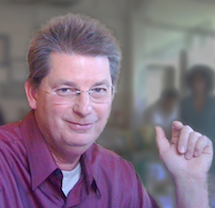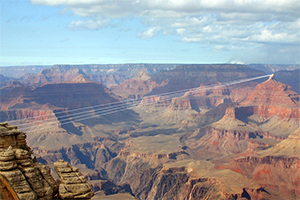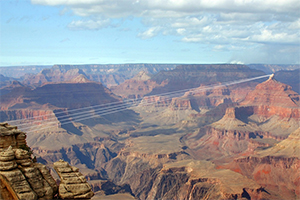
The architect Louis Kahn wrote that "beauty emerges from selection, affinities, integration, love." Along with the effect, all four of these causes were present at Thursday's Berkeley Symphony season opener, but the third of Kahn's causes led to mixed results and raised questions.
The concert featured the premiere of Paul Dresher's Concerto for Quadrachord in its first half, then concluded with Beethoven's Symphony No. 7. A whatchama-chord? you may ask. This is a 15-foot long, aluminum sawhorse of an electronic instrument with four strings on it, invented by Dresher and developed in collaboration with Daniel Schmidt over the last decade. (See SFCV’s interview with Dresher.)
Like any proud father anxious that his child, home-schooled in a workshop, be admitted to the Harvard of a symphony orchestra, the Bay Area composer set great store by his concerto, as he declared in an online interview :
I've been building and inventing musical instruments since I was at high school. So I've used them both with electronics and chamber music, but I've never taken the step of trying to find a way to integrate them with the orchestra. So this is really the culmination in some ways, you could say, with certain threads of my whole life's work.
Pulling It All Together

So, how fared Dresher's goal of integration? In any concerto, the composer must artfully balance the contrast between soloist and orchestra while also connecting them. Dresher successfully integrated the quadrachord by separating out some of the string and brass instruments, which were retuned to achieve the unconventional harmonic overtones that can be elicited by the quadrachord. On the contrast side, against the traditional temperament of the rest of the orchestra, Dresher from time to time pitted the more extreme differences of the quadrachord's tuning system. Also, particularly in the third movement, he emphasized the percussive capabilities of the quadrachord.
The strategy worked for the most part. The quadrachord was most effective as a percussion instrument. Dresher hit its strings with mallets and sticks, but it sounded best plucked. The second movement was a masterpiece chaconne: a series of harmonies with an often-associated melody was repeated in units of 14 bars. The tonalities deliciously diverged from those of most of the orchestra and the base tune as the movement progressed. But even more important to the quality of the movement, the tune and its harmonies were entrancing in themselves, whatever was playing them. The "out of tune" aspect bothered few of the patrons I interviewed during intermission. Only one person said "It was hard for me to take; it put me back in the woodshop."
On the other hand, many of the instrument's subtleties were drowned out by the orchestra. I find it much more effective — the concerto’s second movement excepted — in the chamber setting where I'd heard it in prior concerts. Perhaps a more sparing orchestration would bring these out more, but then some of the drama of an orchestra would be lost. And there was plenty of that in the composition. Dresher has a great sense of structure and a melodic gift. He should consider writing more for orchestra alone.
And that brings up a larger issue. Does Dresher seriously think there will be quadrachords churned out by factories like pianos, and become common culturally, as students line up to play them and composers to write for them? I doubt it. This concerto remains a curiosity with an awkwardness. Many of the quadrachord's sounds are probably duplicable on the synthesizers that are become more ubiquitous as a standard orchestral accessory. Dresher is an underappreciated local composer of great talent who would gain greater acclaim, perhaps, if he wrote for conventional forces.
Insight and Fire From Carneiro

The concerto was seamlessly and gorgeously connected to the opening number, Charles Ives' The Unanswered Question. In stroke of brilliance, Music Director Joana Carneiro played both works, which have in common a certain ethereality, without an intervening pause. The orchestra performed a terrific version of the Ives, with opening strings evanescently hushed.
Though Carneiro informed the audience that the two pieces would be played without pause, many people I spoke with at intermission wondered what happened. Why wasn't the Ives played? they asked. Because Dresher was onstage with his quadrachord during the Question, these patrons thought the Ives was written by Dresher. Now that's perfect integration for you!
"Over-integration" in orchestral balance was a problem for me in the Beethoven. I don't know whether it was where I was sitting, whether Zellerbach was doing its usual "suck-the-sound-away" thing, or whether Carneiro was deliberately toning down the wind section. I couldn't hear it much of the time. Should those players be put on higher risers?
In any event, Carneiro and her orchestra did a fine job with the classic, especially with the second movement (the "apotheosis of the dance") and the finale. There, Carneiro rode the players like the Lone Ranger to the rescue, goosing the tempo to thrill the audience to their feet at the conclusion. A slight raggedness here and there was an immaterial result, and the result was worth it. I just wish her energetic conducting, athletic as it could be, were not so seemingly hampered by her floor-length, stiffly conical dress.

